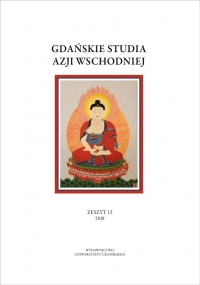Friendship Dolls – kiedy lalki stają się posłańcami
Abstrakt
The phenomenon of nihon ningyō, or the Japanese doll, is not well known in Poland, nor is it substantively elaborated. The specificity of dolls as very personal, magical or ritual objects gives them an important role in the lives of the Japanese. Particularly important are the girls’ sets of hina dolls, which are presented once a year on the occasion of the hina matsuri festival that takes place on the third day of March. This custom became an inspiration for the American-Japanese cultural exchange, as a result of which in 1927 over 12,000 American dolls called the ‘Friendship Dolls’ were sent to Japan as a gift from the heart for Japanese children and a message of goodwill. This operation was a response to the tightening of US migration laws and anti-Japanese sentiments in the United States. Thanks to the nationwide information campaign and the involvement of thousands of American pupils, the campaign also became an opportunity to learn about Japanese culture and customs. In thanks for the gift, the Japanese sent to the States a set of 58 dolls representing all the prefectures of the country, the largest cities and Japan itself. The history of the exchange and the further history of the individual dolls have become the subject of scientific research and collector’s search for the dolls that have survived to this day.

 Uniwersyteckie Czasopisma Naukowe
Uniwersyteckie Czasopisma Naukowe





